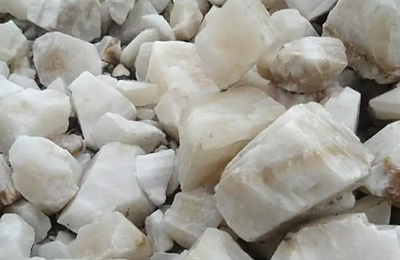Calcite is a common mineral found in sedimentary rocks, such as limestone, marble, and chalk. It is a versatile mineral with a wide range of uses, including as a building material, a filler in paint and plastics, and in the production of cement. As such, calcite is an important mineral in industry and commerce.

The process of crushing, grinding, and processing calcite is a complex task that requires a variety of equipment. In this article, we will discuss the various steps involved in processing calcite.
Crushing:
The first step in the process of processing calcite is crushing. This can be done using a jaw crusher, impact crusher, cone crusher, or other crushing equipment. The aim of crushing is to reduce the size of calcite material to a size that can be further processed. The crushed calcite material is then transported to the grinding mill for further processing.The resulting particles are typically between 6 and 10 mm in size.
Grinding:
The second step in the process is grinding. This involves the use of a grinding mill to grind the crushed calcite material into a fine powder. The grinding mill can be a ball mill, Raymond mill, vertical roller mill, or other grinding equipment. The choice of grinding equipment depends on the size of the calcite material and the desired particle size of the final productm, and the final product particle size ranges from 0.613mm to 0.038 mm.
Processing:
The final step in the process is processing. This involves the use of various equipment to further process the calcite material into the desired product. The final product can be a powder, a slurry, or a solid. The processing equipment used depends on the final product and can include classifiers, filters, centrifuges, and other equipment.
One of the most common uses of calcite is in the production of cement. In this process, calcite is crushed and ground to a fine powder, which is then mixed with other materials such as clay and limestone. The mixture is then heated in a kiln to produce cement. Calcite is also used as a filler in the production of paper, plastics, and rubber. It is added to these materials to improve their strength and durability.
Calcite is also used in the production of glass. It is added to the glass mixture to improve its clarity and to make it more resistant to heat and chemicals. Calcite is also used as a flux in the production of steel. It is added to the steel mixture to remove impurities and to improve its quality.
In conclusion, the process of crushing, grinding, and processing calcite is a complex task that requires a variety of equipment. The final product can be used in a wide range of industries, from cement production to the production of glass and steel. Calcite is a versatile mineral with many industrial applications, and its importance in the manufacturing industry cannot be overstated.

Contact us Now to find out what we can do for you next project !